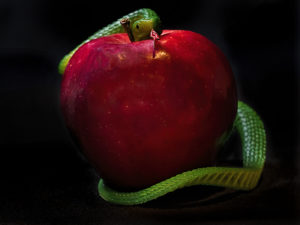The Golden Compass contains some anti-Catholic themes. Upon first glance, they might be hidden to the reader, but are present nevertheless. Halton administration questioned whether the younger students would even be capable of uncovering these messages. The complexity of the novel served as a reason to keep it on the shelves, but other faculty members were not convinced the students would remain unaware of the concealed content. The most obvious anti-Catholic part of The Golden Compass is that the evil governing body known as The Magisterium is also called the Church. However, I would like to point out that there are several other books that attack an institution with absolute power, and even more that depict the battle between good and evil.
What’s the deal with Dust?
After reading The Golden Compass, I was still perplexed as to what “Dust” really is. Dust is the crux of the plot, as it powers the golden compass. Obviously, it is magical and valuable. The antagonists, Lord Asriel, and Mrs. Coulter in conjunction with the Magisterium, all want to destroy it. In an interview, Philip Pullman states that Dust is the physical manifestation of “everything that is consciousness: human thought, imagination, love, affection, kindness, good things, and curiosity.” In Chapter 21, the reader is finally provided with a more technical definition of Dust.
“Given the Church’s nature, there was only one thing they could have chosen. The Magisterium decided that Dust was the physical evidence for original sin.”
“And that was how sin came into the world,” he said, “sin and shame and death. It came the moment their [Adam and Eve] daemons became fixed.”

It is now understood that Dust is a symbol of the original sin. The first humans God created, Adam and Eve, lived carefree in the Garden of Eden. God instructs them not to eat the forbidden fruit on the tree of knowledge, but they were welcome to enjoy anything else they desired. One fateful day, a serpent coerces them into eating the forbidden fruit. This act is known as the original sin. In Pullman’s books, the original sin is what makes adult’s daemons stabilize in one form. The Magisterium conducts cruel experiments on children to find a way to negate the effects of the original sin. It seems like a far leap to compare the Catholic Church to an organization that kidnaps and kills kids, but there is a subtle likeness between the two.
Put simply, the original sin can be knowledge or self awareness. At the conclusion of the novel, Lyra makes the pivotal realization that Dust must be a positive force in the universe, since evil powers want to annihilate it. We leave the story with the fate of the world resting in the hands of a brave 11-year-old girl, who assumes the mission to save Dust. Ironically, by censoring The Golden Compass in the classroom, one is acting as a villain by containing Dust.
“We’ve heard them all talk about Dust, and they’re so afraid of it, and you know what? We believed them, even though we could see that what they were doing was wicked and evil and wrong… We thought Dust must be bad too, because they were grown up and they said so. But what if it isn’t? What if it’s… Yeah! What if it’s really good…”
Source Cited:
Pullman, Philip. “What is Dust?” Philip Pullman, http://www.philip-pullman.com/hdm?pageID=4.
Shmoop Editorial Team. “The Golden Compass Theme of Religion.” Shmoop. Shmoop University, Inc., 11 Nov. 2008.